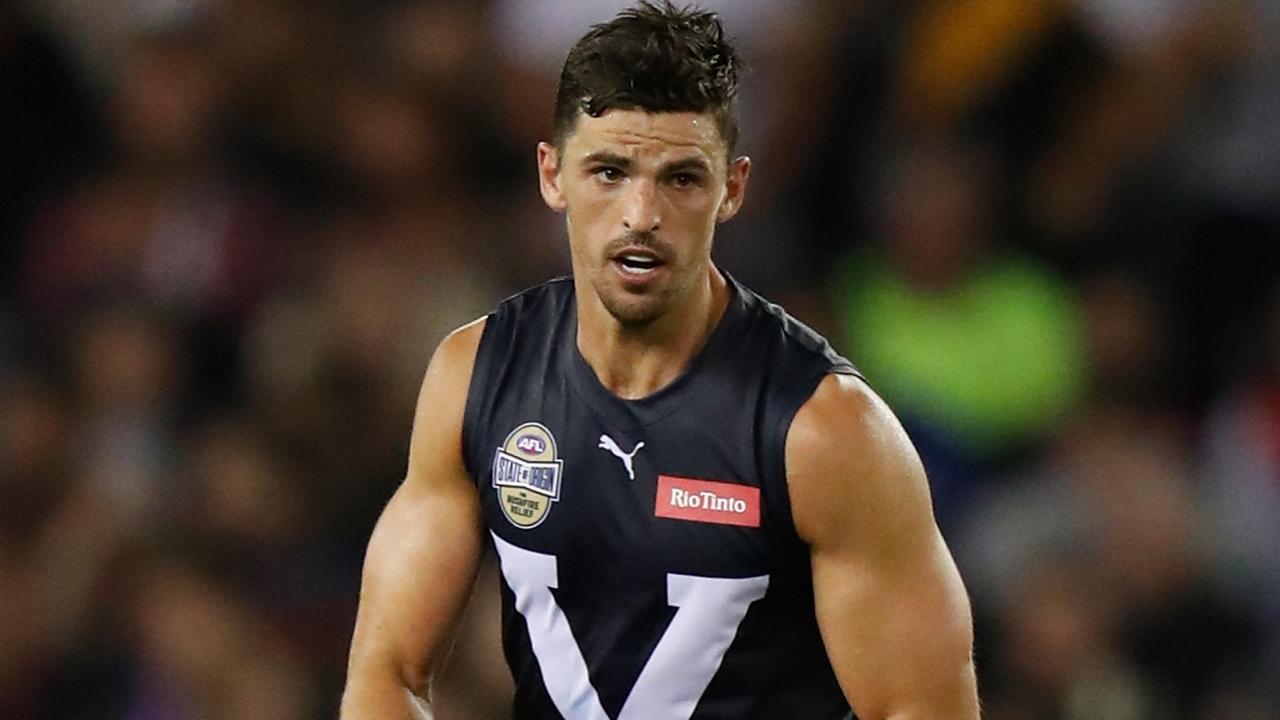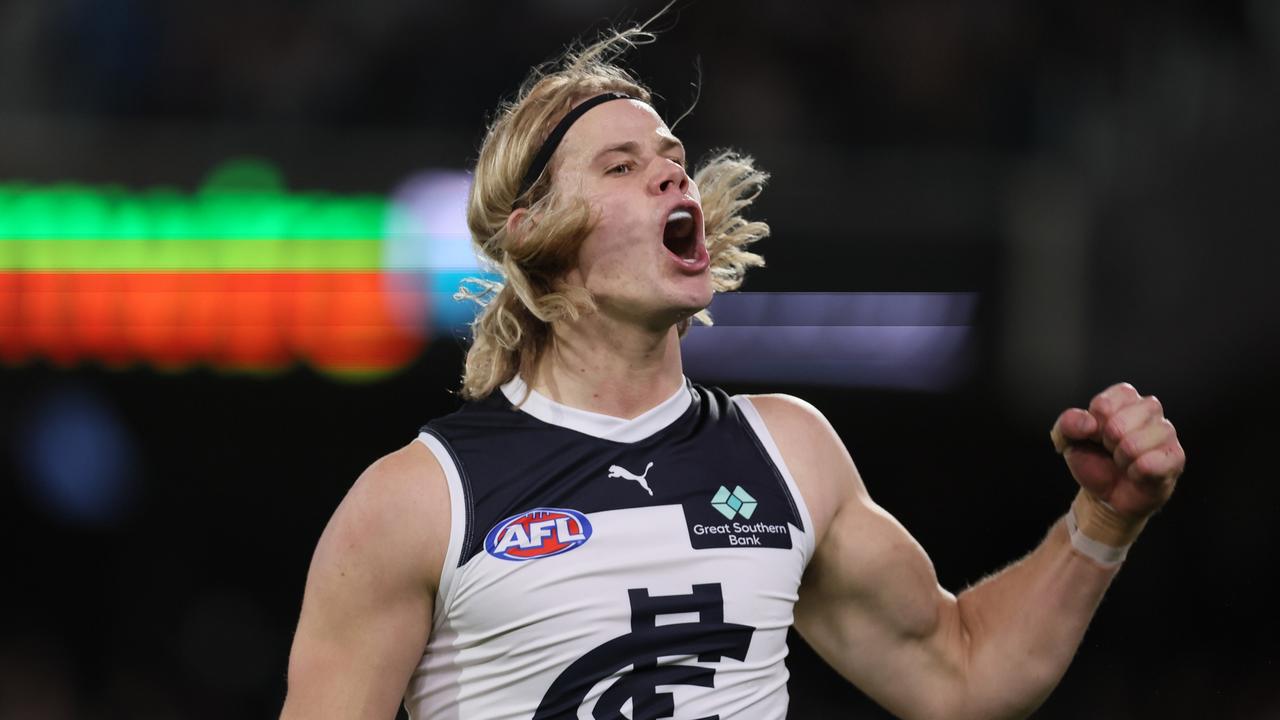AFLW news: Concussion remains biggest issue despite drop in head knocks, Carlton to undertake review
A host of injuries are common occurrences, but one stands out above the rest in the AFLW’s Injury Report.
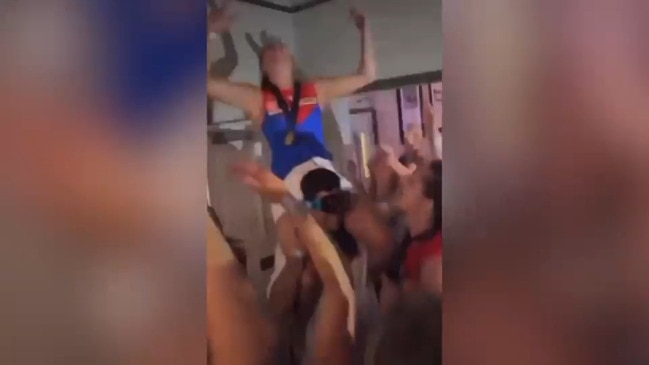
Concussion remains the biggest injury issue facing the AFLW, despite a drop in the rate of head knocks across the competition last season.
The 2022 AFLW Injury Report, which was released on Wednesday, showed that there was a rate of 1.39 new concussions per club in season seven.
That figure was down from 2.0 concussions per team in season six and 1.5 concussions per team in season five.
However, it remains the most common injury ahead of medical illnesses (1.33 per club), while ACL (0.94 per club), ankle (0.89 per club) and hamstring injuries (0.89 per club) also continue to be common occurrences.
The overall rate of all injuries in the league was down, coming in at 10.7 new injuries per club.
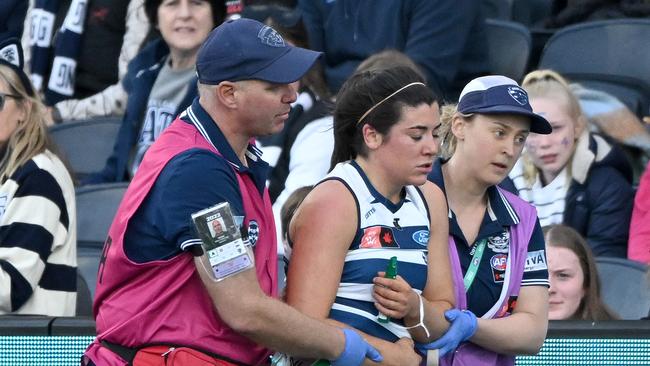
“The continuous education of coaches, players and support staff is critical to ensure we best-protect and prevent injuries amongst AFLW footballers,” AFL football operations boss Andrew Dillon said.
“We will continue to support research and implement best practice injury prevention programs across all levels of women’s football.”
Across 99 AFLW games played in season seven, there were a total of 25 recorded concussions.
The league follows the same guidelines as the AFL men’s competition, with players unable to return to the field for at least 12 days after a diagnosed concussion.
WorkSafe recently completed a lengthy investigation into the AFL’s management of sports-related concussion, deciding to take no further action.
A parliamentary inquiry into concussions in the AFL and other contact sports is expected to be held next year.
Blues’ season review to examine Harford, fitness levels
— Jon Ralph
A leading AFL official is helping conduct a review into Carlton’s two-win AFLW season as the Blues attempt to rebuild quickly to become a premiership force.
The review will put some focus on coach Daniel Harford, contracted to the end of 2023, after a year in which Carlton attempted to rebuild after a string of high-profile departures.
Carlton’s review of its AFLW operations will focus on how it integrates its men’s and women’s programs and return to finals contention after two poor seasons.
The review will also canvass the gap between Carlton’s levels of professionalism and fitness compared to some of the league’s heavyweights in Melbourne and Brisbane.
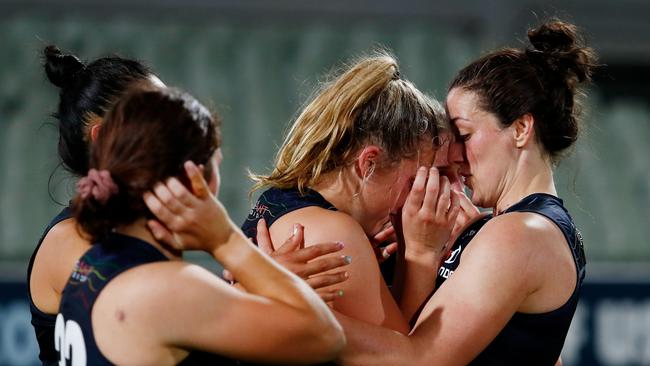
Clubs are balancing how to extract fully professional performances from players only paid part-time wages, with some clubs vastly fitter than their rivals.
Carlton is just one of the clubs working through the challenges of how to encourage greater commitment from players who are often keen to hold the collective bargaining agreement to the letter in regard to training hours.
While clubs like Melbourne and Brisbane have thrived with players prepared to train on official days off while going over and above to improve, other clubs are still negotiating with players on many of those issues.
The AFL’s general manager of competition management Laura Kane will be a key member of the review along with Carlton’s CEO Brian Cook and football boss Brad Lloyd.
While there is a conflict of interest in one of the AFL’s leading officials being at the centre of a club-based review, the league gave their blessing for Kane to be involved.
The league reasoned that Kane had an intimate knowledge of the competition given her current AFL role and her previous role at North Melbourne leading the club’s submission for an AFLW licence.
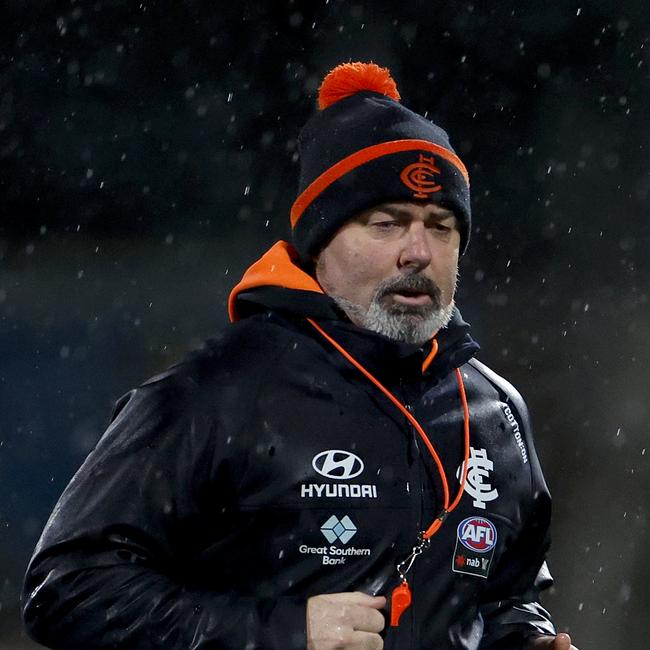
Carlton lost many of its best players entering this season including best-and-fairest winner Madison Prespakis, Georgie Gee, Nicola Stevens, Charlotte Wilson, Courtney Jones and Lauren Brazzale.
It led Carlton down the path of youth in a season with two wins, two draws and six losses as it attempted to quickly pump games into exciting young kids.
But Carlton is clearly impatient with their lack of success since the 2019 Grand Final loss and keen to ensure the reasons for the lack of victories are not because of other reasons.
Harford has been one of the most popular and accessible figures across the AFLW competition as a promoter of the game.
Carlton lauded his capacity to build strong connections and “nurture relationships” when it appointed him again for two seasons in April this year.
He was named the AFLW AFLCA Coach of the Year in 2019 with the club’s head of football Brett Munro acknowledging the rebuild when he was re-signed this year.
“Our list is the youngest in the competition and Daniel has shown that development is a big focus and will continue to be over the next few years,” he said.
2023 AFLW SEASON KICKOFF SET
- Chris Cavanagh
Spring looks set to be the home of AFLW again next year, with the league viewing the change of timing as a success despite a few headwinds.
Two seasons of AFLW were played this year after the decision was made to move the competition away from summer.
There were fears the growing competition would have lost momentum had it waited 18 months between seasons to make the spring switch next year, which aimed to provide a little more clear air.
AFLW general manager Nicole Livingstone said last month that it had “been a phenomenal year for women’s football”, adding that “the future is really bright for the women”.
The most recent season was the first in which all 18 AFL clubs were represented in the women’s competition.
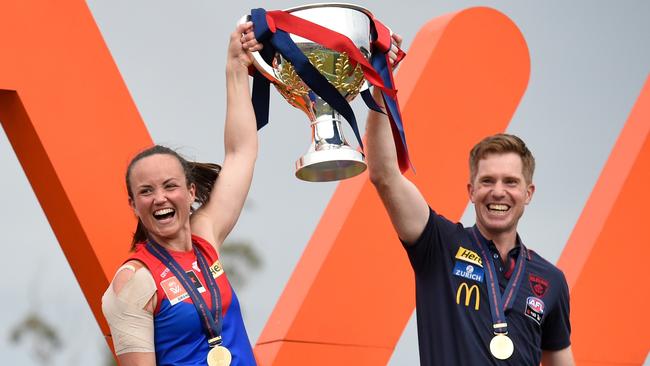
The exact structure of the 2023 AFLW season will be guided by a new Collective Bargaining Agreement (CBA), which is still being worked through between the AFL and the AFL Players Association (AFLPA).
The AFLPA is awaiting financial forecasts from the AFL before determining its position for negotiations.
The association is hoping to do a joint CBA for its men’s and women’s players, with both groups being without a current agreement for next year.
Outgoing AFL chief executive Gillon McLachlan has delayed his departure until next April, with a new CBA being one of his key priorities over coming months.
THE AFLPA agreed to a one-season CBA for its most recent campaign, which began on the last weekend of August and concluded with a November 27 Grand Final.
The home-and-away season was kept at 10 games, but an extra week of finals was added.
List sizes remained at 30 players, but average salaries increased 94 per cent.
The AFLPA has voiced its hopes that AFLW players will become “full time footballers by 2026”, with the last CBA considered a “first step” towards that.
A new CBA – which now looks unlikely to be ticked off before Christmas – will determine the length of the season, list sizes and player wages.
Melbourne tasted premiership success in season seven of the AFLW last month, scoring a four-point win over Brisbane at the Lions’ new Springfield home base.
EVERY AFLW CLUB’S BEST AND FAIREST TOP-THREE
ADELAIDE
Winner: Anne Hatchard (343 votes)
Runner-up: Ebony Marinoff (339 votes)
Third: Chelsea Biddell (336 votes)
BRISBANE
Winner: Emily Bates (190 votes)
Runner-up: Ally Anderson (187 votes)
Third: Nat Grider (184 votes)
CARLTON
Winner: Mimi Hill (86 votes)
Runner-up: Abbie McKay (84 votes)
Third: Breann Moody (61 votes)
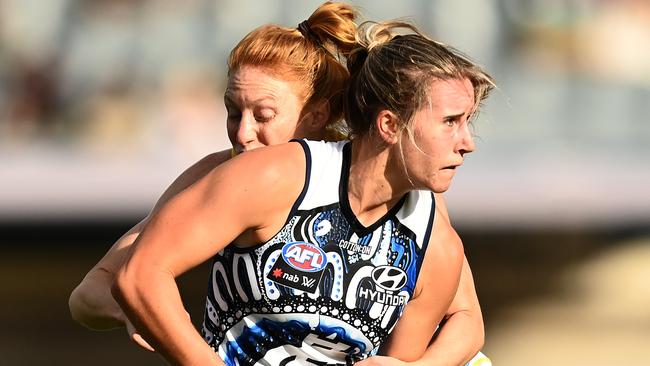
COLLINGWOOD
Winner: Jordyn Allen (84 votes)
Runner-up: Jaimee Lambert (81 votes)
Third: Chloe Molloy (71 votes)
ESSENDON
Winner: Maddy Prespakis (98 votes)
Runner-up: Bonnie Toogood (71 votes)
Third: Steph Cain (57 votes)
FREMANTLE
Winner: Kiara Bowers (169 votes)
Runner-up: Hayley Miller (114 votes)
Third: Aine Tighe (110 votes)
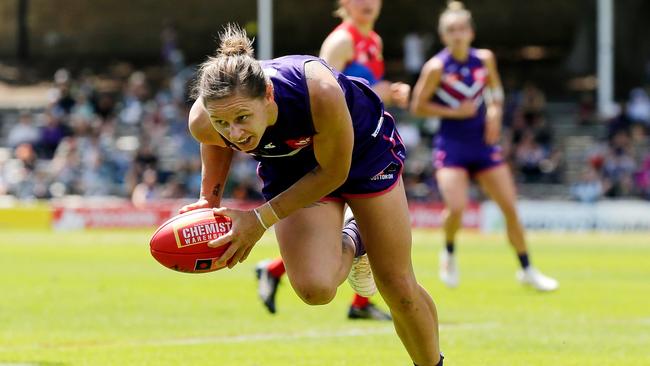
GEELONG
Winner: Amy McDonald (127 votes)
Runner-up: Georgie Prespakis (123 votes)
Third: Nina Morrison (67 votes)
GOLD COAST
Winner: Charlie Rowbottom (279 votes)
Runner-up: Alison Drennan (240 votes)
Third: Claudia Whitfort (237 votes)
GWS GIANTS
Winner: Alyce Parker (99 votes)
Runner-up: Georgia Garnett (69 votes)
Third: Tarni Evans (68 votes)
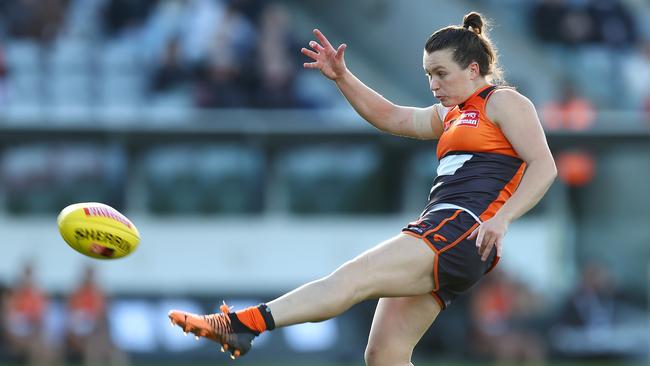
HAWTHORN
Winner: Tilly Lucas-Rodd (83 votes)
Runner-up: Aileen Gilroy (74 votes)
Third: Jasmine Fleming (71 votes)
MELBOURNE
Winner: Kate Hore (69 votes)
Runner-up: Tyla Hanks (64 votes)
Third: Olivia Purcell (61 votes)
NORTH MELBOURNE
Winner: Jasmine Garner (208 votes)
Runner-up: Ash Riddell (175 votes)
Third: Jenna Bruton (174 votes)
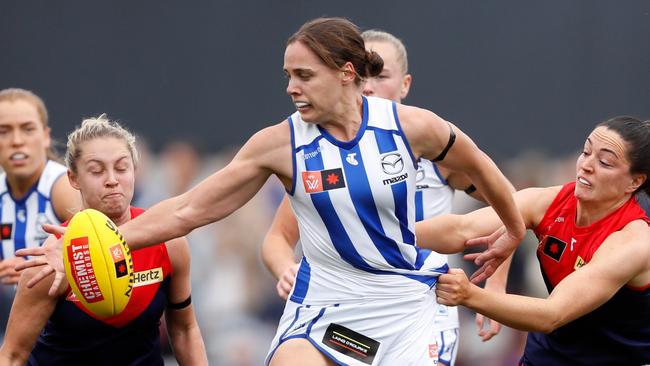
PORT ADELAIDE
Winner: Hannah Ewings (86 votes)
Runner-up: Erin Phillips (81 votes)
Third: Abbey Dowrick (80 votes)
RICHMOND
Winner: Monique Conti (30 votes)
Runner-up: Eilish Sheerin (26 votes)
Third: Gabby Seymour (24 votes)
ST KILDA
Winner: Kate Shierlaw (37 votes)
Runner-up: Bianca Jakobsson (34 votes)
Third: Molly McDonald (32 votes)
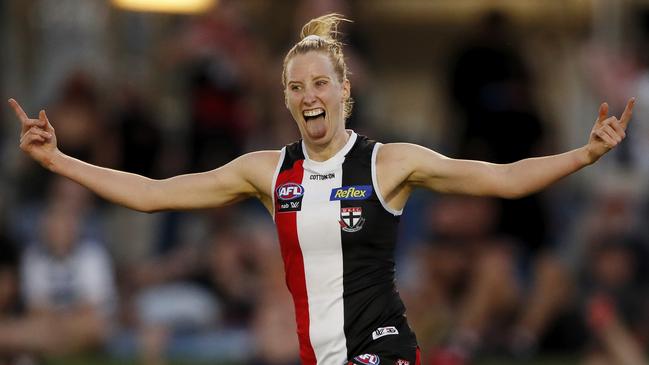
SYDNEY
Winner: Cynthia Hamilton (81 votes)
Runner-up: Montana Ham (71 votes)
Third: Sofia Hurley (62 votes)
WEST COAST
Winner: Emma Swanson (43 votes)
Runner-up: Aisling McCarthy (34 votes)
Third: Isabella Lewis (33 votes)
WESTERN BULLDOGS
Winner: Ellie Blackburn (94 votes)
Runner-up: Alice Edmonds (78 votes)
Third: Isabelle Pritchard (70 votes)
TRADITION DUMPED IN CHANGE TO AFLW UNIFORMS
Female footballers will no longer be required to wear white shorts during matches, with the AFL breaking tradition in a bid to remove “barriers to participation”.
Away teams have long been forced to wear white shorts across the league’s men’s and women’s competitions.
However, a memo sent to clubs on Thursday stated that from next year all teams would be allowed to wear coloured shorts in all women’s competitions under the AFL’s control, including AFLW.
“Following extensive industry consultation, the removal of white shorts will address athlete in-competition performance anxieties and barriers to participation across all levels of women’s and girls’ footy,” the memo read.
“This initiative will take place across the AFLW competition, VFLW competition, AFLW U18 National Championships and any AFL-managed talent pathway activities from 2023 onward.”
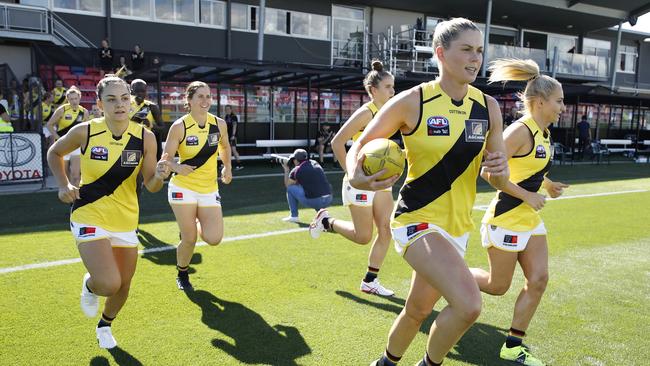
AFL head of mental health and wellbeing Dr Kate Hall said the change was an important one that could lead to greater participation in women’s football.
“This policy is to ensure women and girls can confidently play and enjoy Australian Rules Football, free from the impact of period stigma,” Dr Hall said.
The move is in step with other sports around the world which have also recently changed their uniform guidelines, including cricket and tennis.
Wimbledon last month announced it would drop its strict all-white uniform rules for women next year.
The All England Club, which runs the tennis Grand Slam, said it would allow female players to wear coloured undershorts “if they choose” so that they could “focus purely on their performance by relieving a potential source of anxiety”.
Former and current athletes have campaigned to put an end to white shorts in female sport, which can be problematic for women experiencing their menstrual period.
A national study of 727 Australian girls aged 12 to 18, which was released by Victoria University last year, found that 64 per cent of respondents preferred to wear dark coloured bottoms during sport outside of school.
“I would prefer to wear dark blue or black shorts,” one study participant said.
“I have white shorts now and every month I get really concerned about leaking and that people can see too much.”





